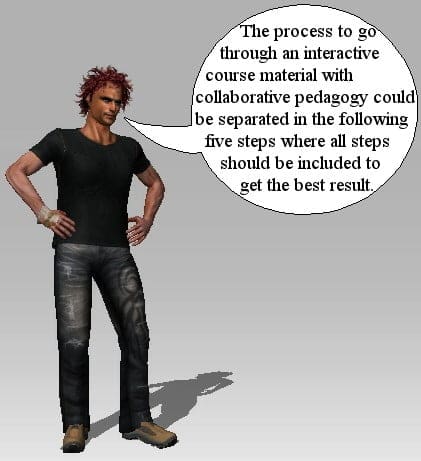 A crucial component to consider
A crucial component to consider![]() is user-friendliness and focus on pedagogy. The engines and the different forms of content structure that was described in part 1-2 of this series of articles thereby for collaborative method should be complemented. The process to go through an interactive course material with collaborative pedagogy could be separated in the following five steps where all steps should be included to get the best result.
is user-friendliness and focus on pedagogy. The engines and the different forms of content structure that was described in part 1-2 of this series of articles thereby for collaborative method should be complemented. The process to go through an interactive course material with collaborative pedagogy could be separated in the following five steps where all steps should be included to get the best result.
5 steps for collaborative pedagogy for interactive courses
1.Experience – complete an exercise/task – ”do it!”
2.Share the experience by describing – ”what happened?”
3.Process – share the experience by discussing general themes – ”what is important?”
4.Generalise – identify principles that can be transferred to authentic situations – ”how transfer?”
5.Transfer – use the new knowledge/skills in real life situations – ”what to do now?”
Training, reflecting and build new knowledge
Point 1-4 can be included in the course modules where the first point means training from the prerequisites that module generate. Point 2-4 is then directed on different forms of feedback and hints from the platform. But ”reflecting” can of course also take place as traditional classroom teaching. This is followed by a new turn with new exercises and reflecting or repetition.
This was a very short description of engines, content structure and pedagogy to create effective interactive courses.
More about user-friendliness click here
More about development of interactive course material click here
Written by
LarsGöran Boström©
Opens in a new tab



